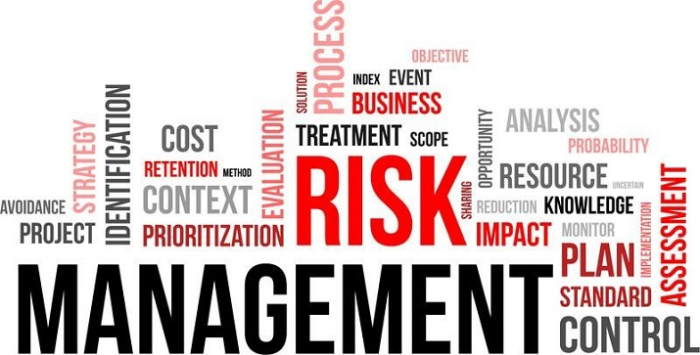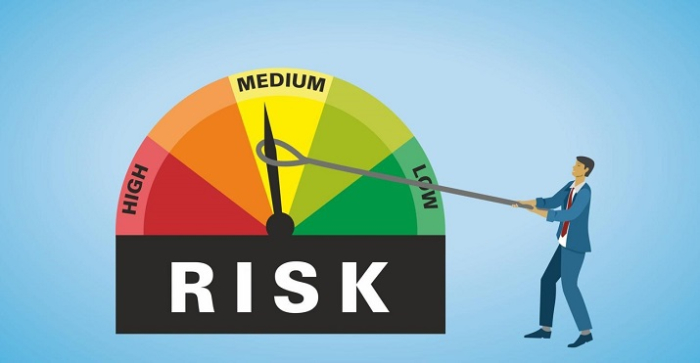
 Data Structure
Data Structure Networking
Networking RDBMS
RDBMS Operating System
Operating System Java
Java MS Excel
MS Excel iOS
iOS HTML
HTML CSS
CSS Android
Android Python
Python C Programming
C Programming C++
C++ C#
C# MongoDB
MongoDB MySQL
MySQL Javascript
Javascript PHP
PHP
- Selected Reading
- UPSC IAS Exams Notes
- Developer's Best Practices
- Questions and Answers
- Effective Resume Writing
- HR Interview Questions
- Computer Glossary
- Who is Who
How Can Quality Risk Management Help You in Project Management?
Quality risk management is one of the essential aspects of project management. It helps identify and assess risks associated with a project, and take measures to mitigate or manage them. By doing so, you can ensure that the project is completed on time and within budget, while also ensuring that the end product is of high quality. In this article, we'll provide you with an overview of quality risk management.
What is Quality Risk Management?
Quality risk management is the process of managing risks associated with the quality, safety, and effectiveness of products and services. Businesses need to identify and assess potential risks, assign a value to each one, decide what actions to take if a risk occurs, and monitor ongoing progress.

If done correctly, Quality Risk Management can help safeguard your business from financial damage or even legal action.
Types of Quality Risks
Continuous Quality Risks
Quality risks that are present throughout a project are called Continuous quality.
They can be identified at all stages of the project, in all phases of it, and even in each part of it.
The risk is present in every aspect of your work because it's not just about how well you manage your resources, but also about how you communicate with stakeholders and other teams regularly so that everyone knows what needs to be done next.
Changeable Quality Risks
Changeable quality risks are those that change as the project progresses. They may be of a certain likelihood or impact, but they can also be both at once. For example, if you have an issue with your supplier that was resolved at the beginning of your project but now has come back and is causing problems again, this would be considered a changeable quality risk. It will likely still occur during the life cycle of your project.
To manage these types of risks effectively, consider using different methods depending on whether or not they're likely to happen during your project's lifecycle. If they are unlikely but could still occur?like having delays caused by weather?then take proactive steps like hiring extra staff members who have expertise in dealing with adverse conditions.
This can be done so that there aren't any issues when things start getting more stressful. If something does happen anyway, it will help keep everyone on track by giving them more time than expected!
Relationship Between Quality And Change Management
Project managers need to understand the relationship between quality and change management. The best way to do this is by having a good change management process in place. A good change management process will help you identify risks related to project delivery and mitigate them before they pose a threat to your organization's reputation or cost-reduction efforts.
The following are some examples of how changes can impact your company ?
Changes in requirements from customers or suppliers may cause delays in production schedules or increase costs due to overtime pay for employees who were on standby until their replacement was ready for work.
If multiple departments are working on different pieces of a project, then one department might need more time than others because it has more complexity within its scope (this could also result in delays).
Quality Risk Management

Quality risk management is considered an important part of project management. Project managers must consider quality risks when developing a project. They need to ensure that the project is being managed in a way that minimizes them.
Quality risk management helps you reduce costs, improve productivity, and increase efficiency through effective planning. For example ?
It allows you to identify problems early on in your project so they can be fixed before they cause significant damage or delay the completion of the project's goals.
It helps improve communication between staff members by giving them access to all necessary information concerning the quality of their work products.
It enables workers at all levels within organizations who may not know how best practices should be used when implementing new technologies onto existing systems. Sometimes it confuses or creates problems for others within those same organizations because there weren't enough resources available internally. Although some firms might allow employees discretion over certain issues while still requiring compliance as part.
Activities Related to Quality Risk Management Must be Documented
Documentation is a critical component of quality risk management. It's necessary to ensure that quality risks are identified and managed effectively, so you need to make sure your team has documented all the activities related to their work.
Documentation Will Help Communicate Risks to Stakeholders
The more information you have about what happens when something goes wrong, the better equipped your team will be at communicating this information back up through its chain of command. This ensures that everyone involved understands how they should respond if something goes awry on their watch. It also makes it easier for them to know what problems might arise in the future!
Documentation Provides Transparency
When people ask questions about why certain things happened or why certain decisions were made, having good documentation can help explain those decisions clearly without confusing anyone else who may want answers too! If there's nothing written down about why these decisions were made, then no one knows where we stand financially because nobody knows where our money comes from.
Improving Information Flow
Quality risk management is a key part of any project's risk mitigation. It helps to improve information flow within an organization, which can be difficult for most organizations due to the sheer volume of data that needs to be processed and shared.
For quality risk management to be effective, there must be a clear understanding of what quality risks are and how they can affect projects. Quality risks often come from unexpected changes in requirements or client expectations. However, they may also arise from other sources such as new technology or changes in regulations or standards that affect how work needs to be done on projects.
Understanding these types of issues will help you identify them early on so that solutions can be put in place before they become major problems later down the line.
Conclusion
In a nutshell, quality risk management is not just about ensuring that the risks you've thought of don't become realities but also ensuring that there are mechanisms in place to address them. All this can be achieved by tailoring your plan and budget for effective actions.
One must always be on the lookout for new techniques that can help you manage your projects safely. Quality risk management is one such technique that has been proven time and again to reduce not just project cost but also the likelihood of failure.

